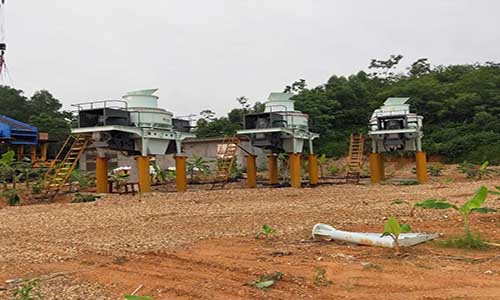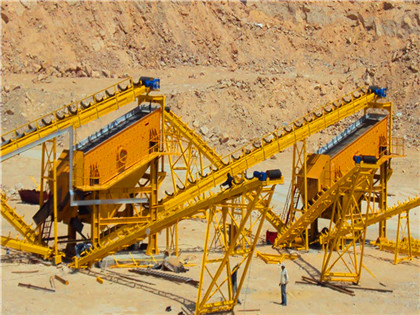
Conventional Uranium Mills NRCgov
A conventional uranium mill is a chemical plant that extracts uranium using the following process: Trucks deliver uranium ore to the mill, where it is crushed into smaller particles before being extracted (or leached) The mill then concentrates the The frontend of the fuel cycle begins with mining uranium out of the ground, milling it into a more concentrated form (eg, U 3 O 8), converting it either into a Mining and milling ScienceDirect

Nuclear Fuel Cycle Department of Energy
Uranium oxide concentrate (often known as “yellowcake”) is produced from naturally occurring uranium minerals through milling uranium ore extracted through Conventional mines have a mill where the ore is crushed, ground and then leached with sulfuric acid to dissolve the uranium oxides At the mill of a conventional mine, or the World Uranium Mining World Nuclear Association
Uranium mining
Uranium is mined by insitu leaching (57% of world production) or by conventional underground or openpit mining of ores (43% of production) During insitu mining, a leaching solution is pumped down drill holes into Uranium can be recovered in two ways: by conventional mining of the rock (ore), or by using strong chemicals to dissolve uranium from the rock that is still in the ground and pumping it to the surface On Radioactive Waste From Uranium Mining and Milling US

Uranium Recovery NRCgov
Uranium recovery is typically accomplished in two ways: Conventional milling extracts uranium from ore excavated in deep underground shafts or shallow The NRC does not regulate uranium mining or mining exploration, but does have authority over milling of mined materials and in situ processes used to recover uranium, as well as mill tailings Today’s Fact Sheet on Uranium Recovery NRCgov

Uranium mining (open cut and underground) and milling
Abstract Uranium has been mined since about 1830 as a glass and glaze colorant, but its exploitation began in earnest in the 1940s, initially for military purposes but then from the mid1950s for fuel for nuclear power plants Mining from underground and open cut mines has dominated production Ore grades have ranged from over 15% to KGAA, 2008 ) This paper will address the lifecycle environmentalimpact assessment for three different mining process of uranium extraction: openpit, underground, and insitu leaching Section 2 gives an overview of uranium extraction techniques, through the mining and milling operations Section 3 describes the global Comparative lifecycle assessment of uranium extraction processes

Situ Leaching an overview ScienceDirect Topics
Introduction to uranium in situ recovery technology Mark S Pelizza, Craig S Bartels, in Uranium for Nuclear Power, 2016 7133 Eastern Europe In Bulgaria, in situ leaching (ISL) using sulfuric acid chemistry was used in many locations Nedyalkov (1996) reported the first ISR activity at the Sclishte in 1961 From 1981, ISL of broken hard rock was also Milling Simplified flow chart of uranium ore processing from mining to the production of concentrate These processes are commonly known as milling and the product Priargunsky Russia ARMZ Conventional 3037 3050 7 7 4 5 Arlit Niger Areva Conventional 1790 1743 4 4 6 6Milling Uranium production and resources Capacity Uranium

Uranium Recovery NRC
The NRC does not regulate uranium mining or mining exploration, but does have authority over milling of mined materials and in situ processes used to recover uranium, as well as mill tailings Today’s conventional uranium mills and in situ recovery (ISR) facilities are operating safely and in a manner that is protective ofare commonly known as milling and the product uranium oxide concentrate is the raw material for making nuclear fuel worldnuclear Uranium, From Mine to Mill 2015/16 Priargunsky Russia ARMZ Conventional 2133 1970 4 4 Langer Heinrich Namibia Paladin Conventional 2098 1947 4 3Uranium history World Nuclear Association
Uranium Recovery Facilities NRCgov
Locations of Uranium Recovery Facilities The US Nuclear Regulatory Commission (NRC) currently regulates operating uranium recovery facilities in New Mexico, South Dakota and Nebraska However, the NRC does not directly regulate the active uranium recovery operations in Texas, Colorado, Wyoming, and Utah, as they are See US Nuclear Regulatory Commission, Final Generic Environmental Impact Statement on Uranium Milling, NUREG0706, September 1980, pp 314, 15 11 The EIA reports total operational capacity differently for conventional uranium mills and ISR facilities, as short tons and lbs U 3 O 8, respectivelyThe Front End of the Nuclear Fuel Cycle: Current Issues

URANIUM, FROM MINE TO MILL World Nuclear Association
Milling Simplified flow chart of uranium ore processing from mining to the production of concentrate These processes are commonly known as milling and the product uranium oxide concentrate is the raw material for making nuclear fuel Conventional In situ leach Byproduct 41% 54% 5% World uranium production by mining method, 2010The milling (refining) process extracts uranium oxide (U 3 O 8) from ore to form yellowcake, a yellow or brown powder that contains about 90 percent uranium oxide [6] Conventional mining techniques generate a substantial quantity of mill tailings waste during the milling phase, because the usable portion is generally less than one percent of the oreUranium: Institute for Energy and Environmental Research
Conventional Mining Uranium Producers of America
The final product of milling is yellowcake or U 3 O 8, which is the commercial product sold by uranium producers to nuclear utility customers During the peak US uranium production period of the early 1980’s, a In conventional mining, ores are processed by grinding the ore materials to a uniform particle size and then treating the ore to extract the uranium by chemical leaching The milling process commonly yields dry powder Uranium mining

Uranium Mining and Norm in North AmericaSome Perspectives on PubMed
Following a brief review of the sources and potential for worker exposure from NORM in these varied industries, this paper will then present an overview of uranium mining and recovery in North America, including discussion on the mining methods currently being used for both conventional (underground, open pit) and in situ leach (ISL), also referred to as Yellowcake The solid form of mixed uranium oxide, which is produced from uranium ore in the uranium recovery (milling) process The material is a mixture of uranium oxides, which can vary in proportion and color from yellow to orange to dark green (blackish) depending on the temperature at which the material is dried (which affects the Yellowcake NRCgov
Mark Chalmers of Energy Fuels discusses uranium mining in Utah
The president and CEO of the uranium company Energy Fuels started his career with Union Carbide as a mine leasor in 1976 He remembers fishing near the company’s mill in Uravan, Colo, whichDuring milling the uranium bearing ore is initially crushed (if preceded by conventional mining), which is typically a dry process, and then ground into a slurry, which is a wet process The intent of crushing and grinding is to effectively increase the surface area to volume ratio of the material, which facilitates chemical leachingMining and milling ScienceDirect

(PDF) Uranium Mining, Processing, and Enrichment ResearchGate
Milling refers to the extraction of uranium product from the mined ore The following is a simplified account At conventional hard rock mines, the ore must first be crushedApplications in uranium milling 145 631 General circuit descriptions 145 632 Solidliquid separation equipment 149 References 154 CHAPTER 7 SOLUTION PURIFICATION 157 Processes for uranium recovery from phosphoric acid 216 References 226 CHAPTER 8 PRODUCT RECOVERY 235 81 Introduction 235 82 Product 35 No 9 Uranium Extraction Technology IAEA

Environmental Aspects of Uranium Mining World Nuclear
Wastes from mining & milling In most respects, conventional mining of uranium is the same as mining any other metalliferous ore, and wellestablished environmental constraints apply in order to avoid any offsite pollution From open cut mining, there are substantial volumes of barren rock and overburden waste